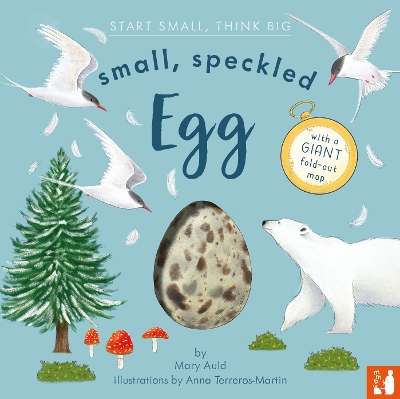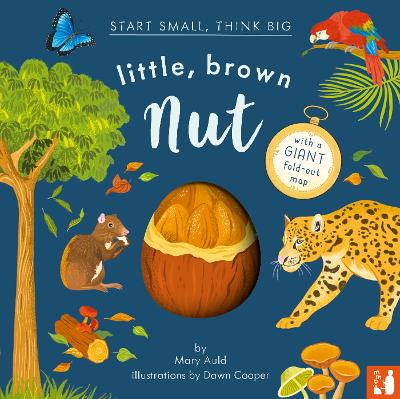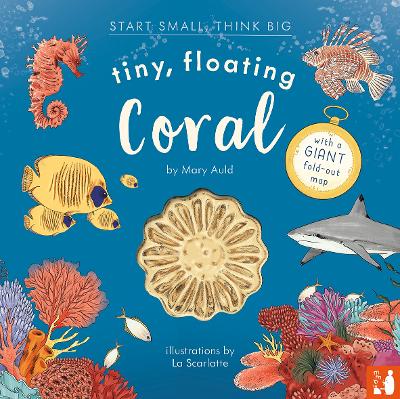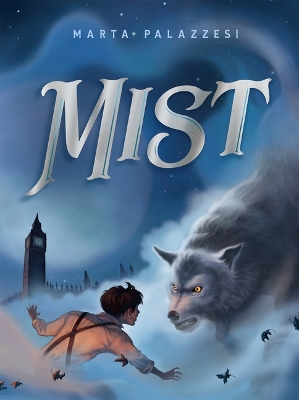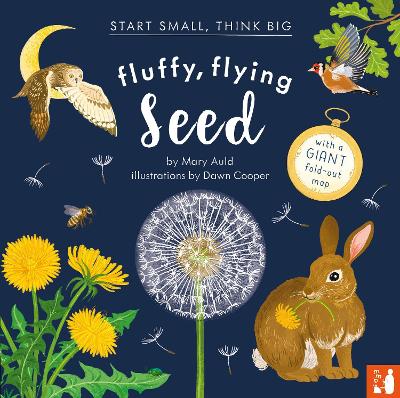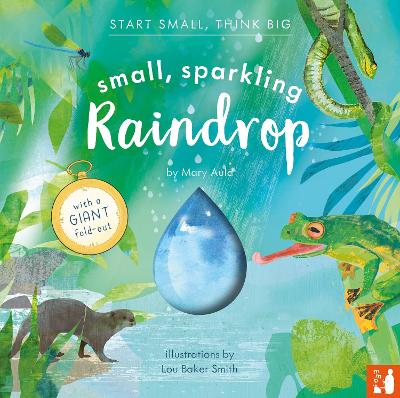Start Small, Think Big
3 primary works • 7 total works
Book 1
Unfold a world of discovery.
Small, Speckled Egg takes young readers from the small and familiar to new areas of knowledge where they really have to think big!
It starts with an egg that hatches into one of the most impressive birds on the planet - an Arctic tern. Watch her grow, learn to fly, and start her long migration from the Arctic to Antarctica and back again. A journey she does every year of her life.
Her lifecycle is turned into this easy-to-read story and the beautiful illustrations transport you to chilly polar landscapes. Additional captions are packed with information for able readers to expand on new areas of knowledge. The book touches on KS1 primary science topics: the lifecycle of a bird, food chains, migration, seasons and polar regions.
At the back of the book there is a giant fold-out map that includes a fun I-Spy game to take children back into the book to find the polar animals.
A brilliant addition to any home or school library with lots of detail that will be returned to again and again.
Look out for more science-based picture books in the Start Small, Think Big series including Little, Brown Nut.
Book 2
*Books for Topics Recommended Reads: 50 Best Books for Year 1**
Start Small, Think Big is a series that sets young readers on a journey of discovery, beginning from the small and familiar to new areas of knowledge where they really have to think big!
Little Brown Nut starts small, with a large, weighty fruit falling from the tallest tree in the Amazon rainforest. Inside is a little brown Brazil nut, surrounded by 19 others. It sits and waits for an agouti, a rodent with teeth so strong that it can free the nut from its hard casing. The story of the Brazil nut tree and the agouti is told clearly and carefully, with facts about germination, photosynthesis, seed dispersal. The narrative progresses in a way that builds understanding and the gorgeous illustrations bring the story and the science to life.
Thinking BIG, the book shows why the rainforest is important to local people and the wider world. A big fold-out has a world map, an at-a-glance lifecycle, and a Rainforest I-Spy of the animals to take children back into the book.
Book 3
Unfold a world of discovery with this beautiful science-based picture book with a giant fold-out map
Tiny, Floating Coral tells the fascinating story of coral, tiny animals that create vast underwater cities where so many other sea creatures live, feed, hide and bring up their young. It starts with a tiny coral planula floating through the ocean in a soup of plankton, looking for a place to settle, divide and grow. The story progresses in a way that builds understanding for young children so they learn about the different types of coral, how they grow and start a colony to become part of the Great Barrier Reef, and why it needs protection. The book is packed with additional facts for confident readers, touching on KS1 primary science topics: life cycles, food chains, habitats, oceans and islands, and marine life. Delicate, colourful illustrations bring the story to life.
At the back of the book there is a giant fold-out world map that includes a fun I-Spy game to take children back into the book to find the sea creatures.
A brilliant addition to any home or school library with lots of detail that will be returned to again and again.
Look out for more science-based picture books in the Start Small, Think Big series including Small, Speckled Egg and Little, Brown Nut.
Ideal for 5 to 8 year olds and perfect for any home or school library.
All young children are interested in the natural world and this book offers a fascinating and beautiful insight into the world of plants and their importance to us and our ecosystem.
Fluffy, Flying Seed starts with a small dandelion seed being carried by the wind and landing safely in a meadow, the perfect place to grow. This is its story, how it grows, protects itself, reproduces and transforms from a bright yellow flower into a delicate white ball of fluffy, flying seeds. There are facts about germination, photosynthesis, seed dispersal, parts of a plant and food chains. The narrative progresses in a way that builds understanding and the gorgeous illustrations bring the story and the science to life.
Fluffy, Flying Seed is part of the Start Small, Think Big, a series of books that sets young readers on a journey of discovery, beginning with small miracles of life and connecting them to the big picture of our natural world. The stories are easy to read and told in a warm, engaging, relatable way. At the end, there is a surprise fold-out with a world map, an illustrated lifecycle and an animal I-Spy game to take readers back into the book.
Perfect to share with children 4 to 8, with two levels of text for new and more confident readers.
Also in the series is Little, Brown Nut; Small, Speckled Egg; and Tiny, Floating Coral.
Follow the journey of a small sparkling raindrop as it falls from a cloud to become part of the mighty Mekong River and the South China Sea. Learn about its never-ending cycle and contribution to the ecosystems of our mountains, rivers, and seas.
The Start Small, Think Big series sets readers on a journey of discovery, beginning with small miracles of life and connecting them to the big picture of our natural world. With a giant fold-out map, an illustrated life cycle and an I-Spy game.
Small, Sparkling Raindrop explores the story of the water cycle and other key primary science topics, including the impact of water on the land and how vital it is for all living things on Earth. The book shows why clean, healthy rivers are vital for both people and wildlife, including the endangered Irawaddy dolphin severely threatened by over-fishing and pollution.
The text has two levels. The main story narrative is written in the first person and is easy to read for beginners. The additional caption text is for confident readers, rich with information. The giant fold-out map will surprise and fascinate every child, and the I-Spy game will take them back into the book to find an array of animals.
Printed on FSC paper from sustainable forests.
